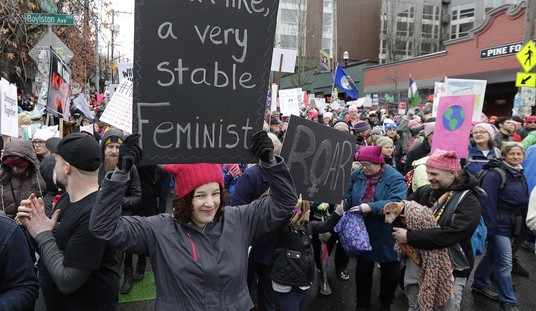On February 11, the U.S. Department of Labor (DOL) reported that 793,000 Americans filed for initial unemployment claims for the week ending February 6. On top of that, DOL revised the prior week’s initial unemployment claims figure from 779,000 to 812,000. That means in the past two weeks nearly 1.5 million Americans have filed for initial unemployment benefits.
As we all know, the coronavirus pandemic has wreaked havoc on the U.S. economy. Millions of Americans have been jobless for months. Millions more will have no jobs to return to when the pandemic eventually subsides.
Taking this into account, now is not the time to proceed with doubling the national minimum wage from $7.25 to $15 per hour, which is exactly what President Biden and the Democratic-controlled Congress is pushing for.
On January 21, Sen. Bernie Sanders (I-VT) released a statement defending his desire for a $15 federal minimum wage. “We must raise the minimum wage to a living wage—at least $15 an hour. And when we do that, not only will we be lifting millions of Americans out of poverty, we will be providing a raise to over 33 million workers,” said Sanders.
He added, “We can no longer tolerate millions of workers not being able to afford to feed their families or pay the rent. The time for talk is over. No more excuses. It is time for Congress to act to raise the minimum wage to at least $15 an hour.”
Sanders, as usual, is resorting to fuzzy math and emotional arguments instead of commonsense and logic when championing his $15 federal minimum wage.
On the other hand, the non-partisan, non-biased, mathematically astute Congressional Budget Office (CBO) recently released a report detailing the effects of doubling the nation’s minimum wage.
According to CBO’s report, titled The Effects on Employment and Family Income of Increasing the Federal Minimum Wage, “under the $15 option, 1.3 million workers who would otherwise be employed would be jobless in an average week in 2025. (That would equal a 0.8 percent reduction in the number of employed workers.) CBO estimates that there is about a two-thirds chance that the change in employment would lie between about zero and a reduction of 3.7 million workers”
You read that right. In four years, if the nation adopts a $15 minimum wage, at least 1.3 million Americans, and possibly up to 3.7 million, would become unemployed. Funny, Bernie failed to mention that inconvenient truth in his statement.
And that is just the tip of the iceberg. According to CBO’s report, “By boosting the income of low-wage workers who keep their jobs, a higher minimum wage raises their families’ real income, lifting some of those families out of poverty. However, real income falls for some families because other workers lose their jobs, business owners lose income, and prices increase for consumers. For those reasons, the net effect of a minimum-wage increase is to reduce average real family income.”
In other words, under a $15 minimum wage, a miniscule percentage of the American population would benefit. However, the vast majority of Americans would be worse off.
It doesn’t take a degree in macroeconomics to understand that more-than-doubling the national minimum wage will produce all sorts of unintended consequences. Low wage jobs will be eliminated. Automation will accelerate. Prices for goods and services will increase. Entry-level jobs, especially those intended for teenagers who are trying to gain experience in the workforce, will no longer exist.
Unfortunately, these facts seem lost on Sanders, Biden, and all the others who are all-in on a $15 national minimum wage.
Raising the minimum wage would be better left to the states. A $15 minimum wage in a place like New York is not suitable in a low-cost rural state like Montana.
Moreover, perhaps we should forgo the minimum wage altogether and rely upon the ironclad law of supply and demand to determine the cost of labor. If prices are best determined by supply and demand, so should the cost of labor.
Chris Talgo ([email protected]) is an editor at The Heartland Institute.












Join the conversation as a VIP Member